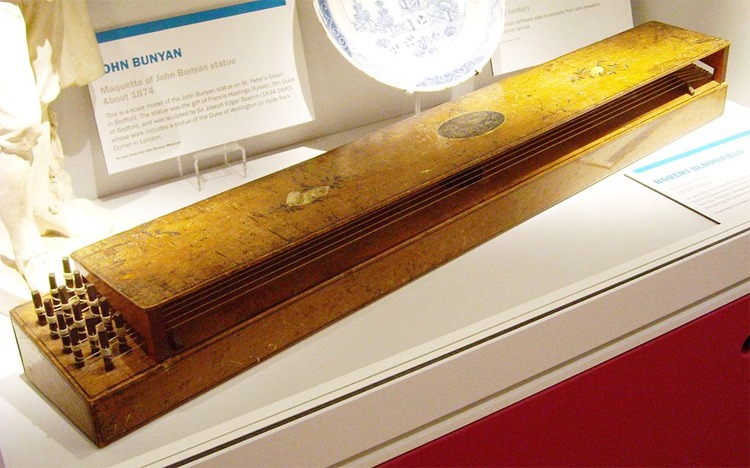An Aeolian Harp, also known as the Wind Harp, is an instrument named after the ancient Greek god, Aeolus, the god of the wind. Traditionally, the aeolian harp was a type of wooden box zitherwith a soundboard where the strings are stretched lengthwise across the instrument’s two bridges. The box that serves as the body measures about 3 feet by 5 inches by 3 inches with ten or twelve strings attached to it. These strings can be made out of different materials that vary in thickness. Although the strings have the same length and pitch, they differ in elasticity. Interestingly, the Aeolian Harp is the only instrument that is played by the wind.In the wind, the strings vibrate in aliquot parts. With that, the Aeolian Harp produce the overtones of the fundamental note. In addition to that, the Aeolian harp is also the only instrument that plays solely harmonic frequencies.
When it comes to the quality of sound, it varies depending on the materials used in making the instrument, including the type of strings, gauge, length, material of the resonating body, and even the characteristic of the wind. Instruments that are metal-frame and without soundboard usually produces music that is different from the wooden soundboards and sound boxes.
The first known legend about the Aeolian Harp was the story about King David and his kinnor harp. In the story, it was stated that King David hung his kinnor above his bed at night to catch the wind. By the 10th century, Dunstan of Canterbury had created a harp that produces sound when the wind blows through the instrument’s strings. Subsequently, in 1650, Athanasius Kircher constructed the first known Aeolian harp. The harp he created was mentioned in his Musurgia Universalis. In 1673, Kircher once again noted the Aeolian harp in his Phonurgia Nova, a book dedicated to the science of acoustics.Following that, during the Romantic movement in the late 18th to 19th century, the Aeolian harp became popular in Germany and England.
In 1789 and 1837, inventors Johann Jacob Schnell and Isouard have attempted to device a keyboard version of the Aeolian harp. The twokeyboard versions were called the anemocorde and piano eolian. Aside from Germany and England, Aeolian harps were also found in Melanesia, Indonesia, Ethiopia, and China.
Furthermore, the Aeolian harp is driven by the Von Karman Vortex Street, or simply Karman Vortex Street. In fluid dynamics, this pattern is a swirling pattern caused by the vortex shedding process. This vortex shedding process is responsible for the unsteady flow of fluid around bodies. This vortex street, along with the motion of the wind, causes the Aeolian harp strings to vibrate. In the 1915 philosophical magazine, the mystery of this instrument was first solved by a British scientist known as John William Strutt, known as Lord Rayleigh.
Because of its timbers that produces an ethereal sound, this instrument has been associated with the numinous. In fact, Homer had stated in his literature that Hermes invented the lyre out of dried sinews stretched over a tortoiseshell and was able to be played by the wind. Aside from that, the same is said to King David’s lyre, which was said to be played by the wind sent from god. The Aeolian harp was also featured in two poems from the Romantic era entitled ‘The Eolian Harp’ and ‘Dejection, An Ode,’ both written by Samuel Taylor Coleridge. As well as that the said instrument was also mentioned in several more works of literature, including the novel The Lost Musicians, an ode titled Ode to the West Wind, an essay A Defence of Poetry, and a poem called Mutability.
Meanwhile, in 1923, Henry Cowell created a piano piece titled‘Aeolian Harp.’ Cowell’s music featured extended techniques on the piano, which included sweeping the performer’s hand on the piano strings and plucking. However, prior to that, Frederic Chopin made the Etude Op. 25, No. 1 in A-flat major in 1836. This piece that was sometimes called the Aeolian Harp is a piece of musical work that features a tender, delicate, and flowing melody. Several years later, Thomas Ward McCain built a 30-foot Aelion harp on a hilltop in Chelsea, Vermont. Moreover, in 2015, an Italian architect named Giuseppe Ferlenga created a monumental Aeolian harp that stands more than six meters high. This monumental Aeolian harp made by Ferlenga is located in Negrar, Province of Verona.

